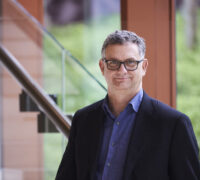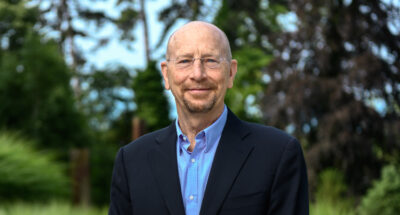
“We were so scared of our IPO”: Leaders Unplugged with former On-CEO Marc Maurer
Marc Maurer shares how ON grew from startup to IPO by defying hype, focusing on purpose, and leading with humility in this candid Leaders Unplugged episode....

by Ben Bryant Published January 2, 2024 in Leadership • 7 min read
In January 2021, Felix Hufeld made global headlines when he stepped down as chief of German financial regulatory authority BaFin. Hufeld’s resignation followed increasing scrutiny over his failure to spot serious fraud at Wirecard, the company at the center of Germany’s largest money-laundering scandal. With debts of more than $1bn, its CEO incarcerated, and another senior executive sensationally on the run, the Wirecard debacle had international press and media gripped for years, with reports on irregularities appearing in the Financial Times as early as 2015. Questions were asked: what was behind Hufeld’s failure to investigate Wirecard? How could he have dropped the ball so spectacularly? His resignation came as a surprise to no one. But his wasn’t the only downfall to hit newsstands that year.
In February of that same year, KPMG UK’s chief Bill Michael was also publicly ousted from the top job after comments he made to colleagues on Zoom were leaked on social media and went viral. During a virtual company town hall about the COVID-19 pandemic, Michael was recorded telling staff to “stop moaning,” and to “stop playing the victim card.” The backlash was swift, with staff reporting that this wasn’t the “first, second, or third time that Bill Michael [had] made such insensitive, throwaway comments.” Michael’s resignation came within days.
Then in March, yogurt maker Danone announced that CEO and chairman Emmanuel Faber would stand down following calls from shareholders to replace him. Confidence in his stewardship of the company had faltered, board representatives told the press, as sales and margin growth had failed to meet expectations, though many speculated that Faber’s increasing focus on climate activism and social justice – his “One Planet, One Health” strategy – was simply too much for Danone’s shareholders to swallow.
Clearly, 2021 was a tricky year to be CEO of a large multinational. But what do these three stories have in common besides their timing?
In my view, all three of these cases illustrate something that makes leadership inherently hard – and very difficult to sustain – and highlights an enormous challenge facing anyone who aspires to lead: how to hold and be comfortable with dissonance.
Well, dissonance is a term that will be familiar to anyone who plays or understands the physics of music. Dissonance happens in music when notes or sounds fail to harmonize or resolve; dissonance is the simultaneous clashing of discordant sounds that jars with the listener, creating tension and discomfort until those sounds resolve back into harmony and consonance that are more pleasing to our ears and senses.
Think of the boldest or wildest passages of Wagner or Stravinsky versus the soothing lull of a Chopin nocturne; the slightly off-key swagger of a honky-tonk piano versus the soaring harmonies of Abba, say, or Crosby, Stills and Nash. Dissonance is beautiful in music but it’s jarring, it’s uncomfortable, and it sets us on edge. We yearn for its resolution into something that makes sense and easier to understand.
You may wonder what any of this has to do with leadership and with the three cautionary tales I’ve shared. In my work with leaders and organizations over the years, I’ve observed that the role of the CEO requires top executives to simultaneously receive, manage, process, and simply hold diverse and very typically discordant perspectives and inputs; perspectives and inputs that can clash, often wildly, creating tension and discomfort for the leader charged with holding them.

Think about it. In your leadership practice, how often do you have to sit with complex or contradictory input, information, needs, or demands? Think about your interactions and obligations towards your team versus your clients; your shareholders and your board versus community interests or the exigencies of ESG. Think about the tensions between the way you communicate internally, within your direct team or department, say, and how you talk to the press or media. Ask yourself: how do these different, often discordant pressures make you feel, respond, or act? Do you feel tension or comfort? Relaxed or on edge?
I contend that dissonance is a fundamental part of the leadership experience. Or to put that another way: it’s your job to hold dissonance, to be comfortable being uncomfortable, but it’s not easy. Human beings are hard-wired to seek resolution, harmony, and release from tension – it’s not called the comfort zone for nothing. But holding on to dissonance, and holding onto it internally without letting it go or projecting it onto others, is a critical skill that any CEO must develop and nurture.
When Felix Hufeld failed to identify and react to irregularities at Wirecard, it was not because of technical incompetence or ignorance. It’s more likely that he found it easier to simply believe what its charismatic CEO was telling him and remain within the cozy world he knew and understood about the German economy than to parse long, complex, and uncomfortable data. Hufeld was seduced into a comfort zone that made it hard for him to see what was increasingly obvious to others. In that sense, Hufeld is an example of a leader with little to no appetite for dissonance.
Similarly, KPMG’s Bill Michael found it impossible to sit with the conflicting and contradictory pressures and needs of diverse stakeholders at a moment of great dissonance: the pandemic. For Michael, it felt more comfortable to pick a side, to opt for one perspective or position over the others, and to reject dissonance by projecting and even lashing out at his subordinates. And while Danone chief Emmanuel Faber may have been lauded and admired by climate activists, and rightly so, he too is perhaps guilty of focusing on one (comfortable) side or perspective over and above considering and integrating the (dissonant) considerations of other stakeholders.
What Hufeld, Michael, and Faber have in common, I think, is an inability to contain the needs of everyone, and to hold dissonance for the entirety of the organization and its ecosystem. Again, I contend that this is the job of the CEO.
If you want to manage this dance, you must be able to hold all this tension within you, to have a tolerance for dissonance, rowdiness, noise, and discord without cracking or putting it onto others.
A lot has been said about leadership over the years. We talk about authenticity and integrity, about being true to your values, multi-lateral in your communications, and about the need for openness and trust. In a way, our role as scholars and researchers is to demystify the practice of leadership and to shed light on the skills, the mechanisms, and the dynamics that make leaders effective.
I have issues with anything that oversimplifies leadership or suggests it’s enough to simply be authentic as a leader of other people. You also have to be comfortable holding jarring, clashing, and contradictory outlooks, thoughts, ideas, and feelings, even as you guide, empower, and reassure your people, your organization, and your ecosystem. Sure, you can opt to disregard the things that make you uncomfortable – the disharmony in the cues and signals that point to a storm on the horizon – or to let rip at colleagues when they drop the ball or disagree with you. But that’s not your job as a leader, and the chances are you’ll be fired for doing so.
No one ever said it was easy at the top, and it’s never going to be. It’s tough. But it’s meant to be tough. And if you stick with it, if you find a way to be comfortable with dissonance, there will be enormous opportunities for you to learn and grow. We’ll explore this in my next article.

Professor of Leadership and Organization at IMD
Ben Bryant is a is a highly skilled educator, executive team coach, and speaker. He is Professor of Leadership and Organization at IMD in Lausanne and Director of the IMD CEO Learning Center and the Transformational Leader program. He was previously the Kristian Gerhard Jebsen Chair for Responsible Leadership.

July 8, 2025 • by Alyson Meister, Marc Maurer in Leadership
Marc Maurer shares how ON grew from startup to IPO by defying hype, focusing on purpose, and leading with humility in this candid Leaders Unplugged episode....

July 7, 2025 • by Richard Baldwin in Leadership
The mid-year economic outlook: How to read the first two quarters of Trump...

July 4, 2025 • by Arturo Pasquel in Leadership
Susanne Hundsbæk-Pedersen, Global Head of Pharma Technical Operations at Roche, shares how she has navigated the various pivots in her career, and the importance of curiosity, optimism and energy. ...

July 3, 2025 • by Eric Quintane in Leadership
Entrepreneurial talent who work with other teams often run into trouble with their managers. Here are ways to get the most out of your ‘boundary spanners’...
 Audio available
Audio availableExplore first person business intelligence from top minds curated for a global executive audience